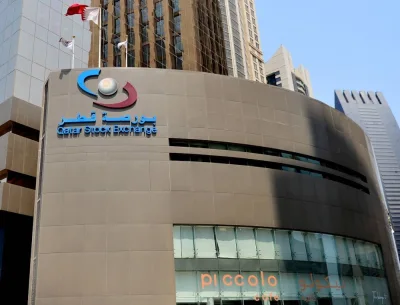Ahead of the launch of exchange-traded funds (ETFs), the Qatar Stock Exchange yesterday held a seminar on ETFs in order to make awareness among the financial participants in the country.
The workshop — which was presented by David Murtagh, former head of European ETF trading desk at Susquehanna International Group, a leading market maker in Europe — discussed the introduction on ETF products, the creation and redemption process for ETFs, the management of the ETF positions and the arbitrage opportunities for the liquidity providers (LPs).
The local bourse is all set to list two ETFs, the size of which will be much larger than those listed elsewhere in the Gulf region, QSE CEO Rashid bin Ali al-Mansoori had earlier told global investment managers in London.
One of them will be an ETF based on government fixed income risk from an Asian borrower and the second one is likely to be an ETF based on a representative Qatar-country index.
The move to launch ETFs comes in the backdrop of an expected QR3bn to QR5bn foreign funds inflow after the upgrade of QSE by both Morgan Stanley Composite Index and Standard and Poor’s-Dow Jones.
Qatar could expect to see total emerging market ETF buying of $175mn, more than four days of average trading volume seen over the past three months, a Bank of America-Merrill Lynch report had said in a report.
According to the Abu Dhabi Investment Company, Qatar and the UAE could see around $350mn from ETFs, following their upgrade into emerging market status.
LP is very critical for ETFs. In ETFS, LPs do not only provide liquidity allowing investors to buy and sell, but are also instrumental in the creation and redemption of units, which allows the ETF to grow, whilst ensuring that the ETF units pricing is adequately balanced against the value of the fund (net asset value or NAV).
ETFs provide investors with the ability to buy and sell individual units, just like shares, of a fund which is designed to mimic a particular asset class or market sector. This allows investors to enjoy the benefits of asset diversification, without the associated costs of building the portfolio themselves.
ETFs are widely used by institutional investors and increasingly by financial advisers and retail investors to achieve passive exposure according to preferred investment strategies, allow investors big and small to build institutional-calibre portfolios, and gain convenient access to markets that would otherwise be difficult to invest in.
The bourse’s first phase saw reforms in the cash market with an aim to enhance the liquidity in the market by means of introducing liquidity providers and securities lending and borrowing. A part of the strategy in this phase includes the launch of ETFs.



